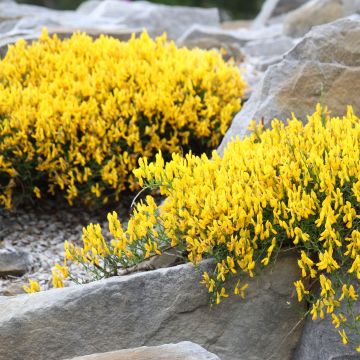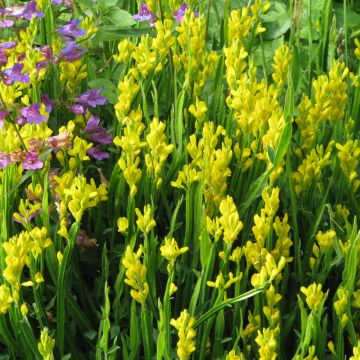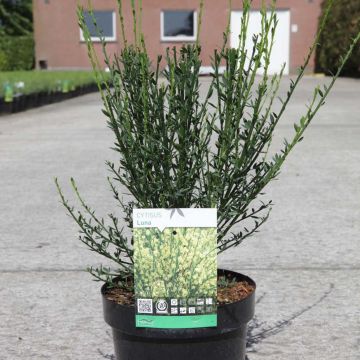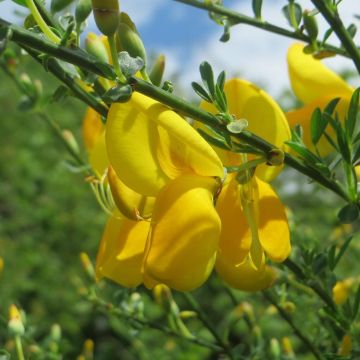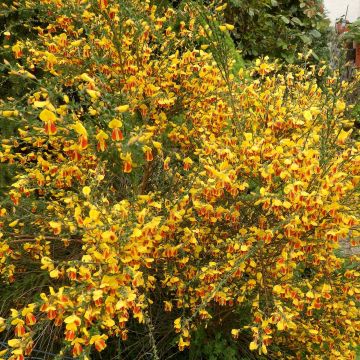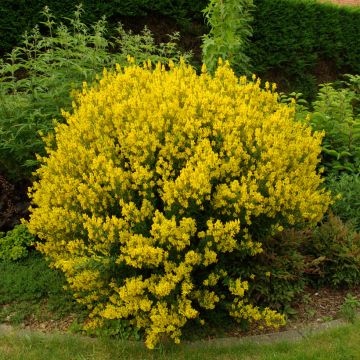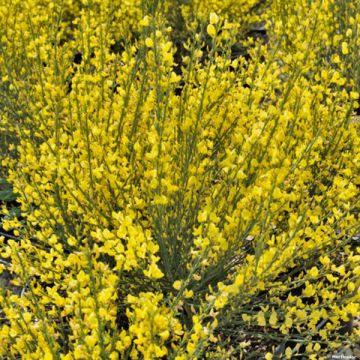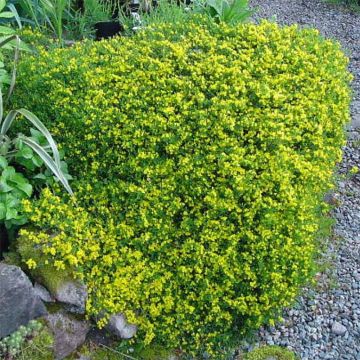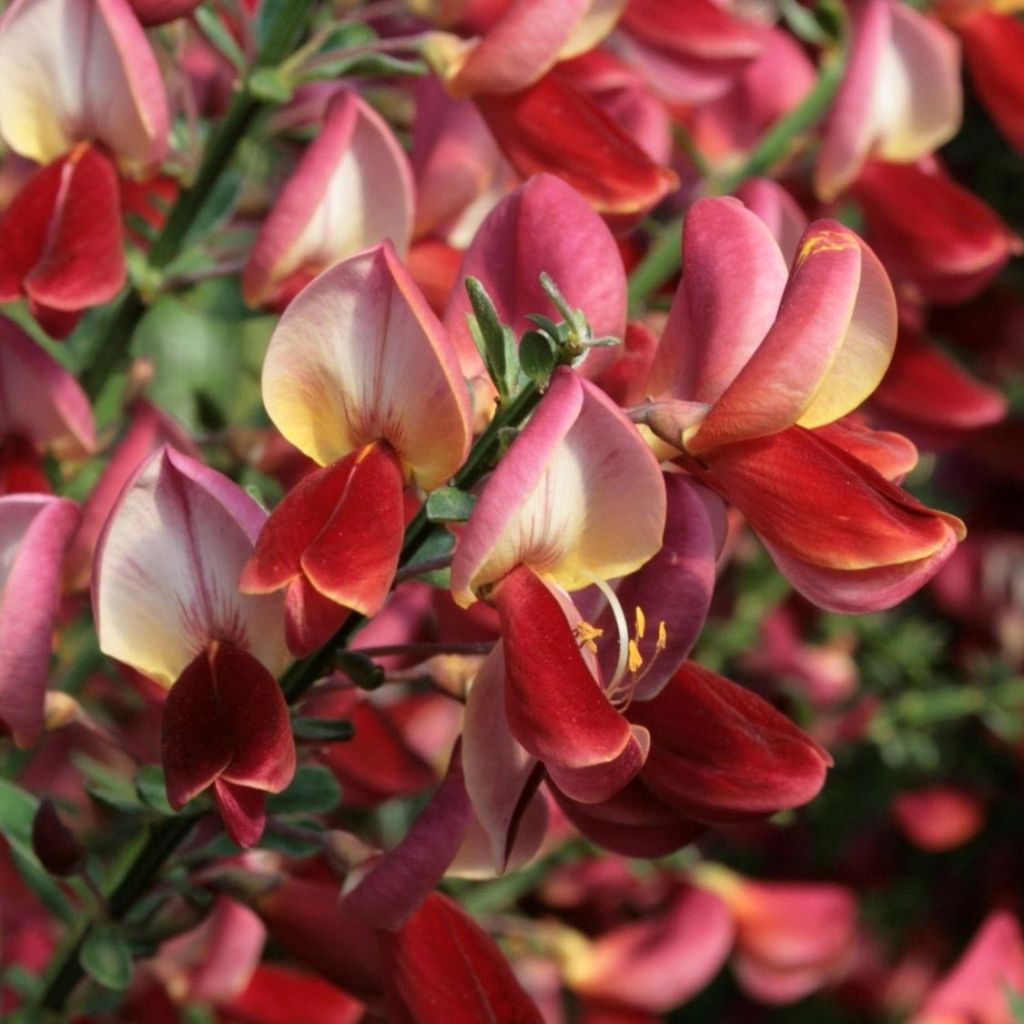

Cytisus scoparius Roter Favorit
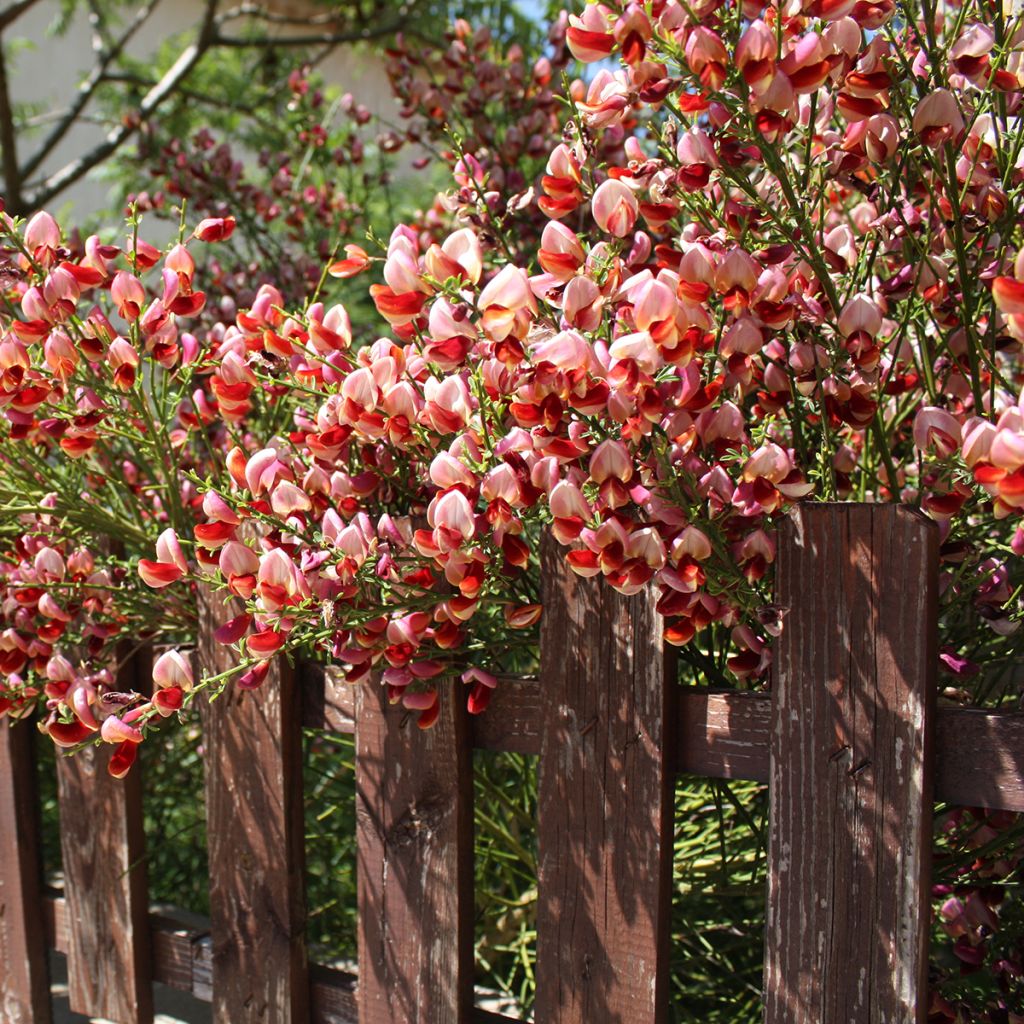

Cytisus scoparius Roter Favorit
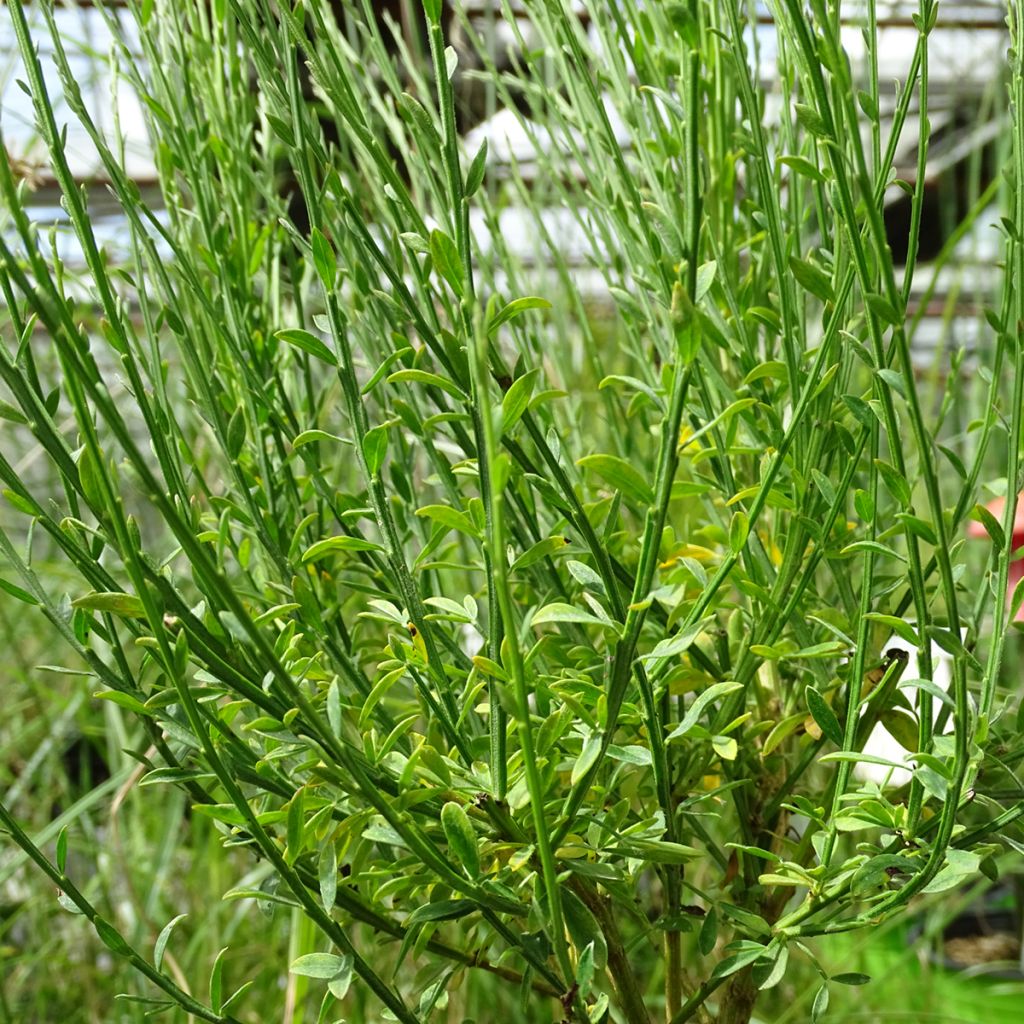

Cytisus scoparius Roter Favorit
Cytisus scoparius Roter Favorit
Cytisus scoparius Roter Favorit
Common Broom, Scotch Broom, European Broom
This item cannot be shipped to the selected country
Delivery charge from €5.90
Delivery to Corse prohibited
More information
Schedule delivery date,
and select date in basket
This plant carries a 24 months recovery warranty
More information
We guarantee the quality of our plants for a full growing cycle, and will replace at our expense any plant that fails to recover under normal climatic and planting conditions.
From €5.90 for pickup delivery and €6.90 for home delivery
Express home delivery from €8.90.
Delivery to Corse prohibited: UE law prohibits the import of this plant from mainland France to Corse as part of the fight against Xylella fastidiosa. Please accept our sincere apologies.
More information
Does this plant fit my garden?
Set up your Plantfit profile →
Description
Cytisus scoparius 'Rote Favorit' is a unique variety with its alternate, abundant and brightly coloured flowering in late spring. This deciduous bush has a wild appearance, with green, slender, upright and trailing branches adorned with a nuanced mix of carmine red, dark red, and yellow papilionaceous flowers. This medium-sized bush is suitable for hedges, solitary planting, flower beds, rockeries, or containers. Easy to grow, it just requires pruning after flowering to prevent seed formation that depletes the plant. Plant it in a sunny location, in soil that is neither too heavy nor too rich.
Cytisus scoparius 'Rote Favorit' belongs to the large Fabaceae family. It is a compact and floriferous cultivar. Like all brooms, it is derived from Cytisus scoparius, a hardy but short-lived bush native to central Europe (up to Ukraine) and eastern Europe, widespread to North Africa. This species is found in dry places, on rather acidic and siliceous soils.
'Rote Favorit', with a size of 1.5m (5ft) in all directions, develops a bushy, upright, fairly dense habit, but with a light appearance due to its small number of leaves. The flexible, arched, green-coloured stems bear deciduous, single, alternate leaves measuring 5 to 10mm (0.2 to 0.4in) in length. In May-June, papilionaceous flowers, 2cm (1in) in length, appear in shades of carmine red, dark red, and yellow. These pea-flowers bloom in clusters at the ends of the branches. They are followed by the formation of fruits that develop into black pods. The fruit pods can stain whatever they fall on, so prune the bush after flowering. The lifespan of this plant is relatively short, around 5 to 8 years.
'Rote Favorit' deserves to be seen in spring. Plant it near the house, on a large slope, or in the centre of a shrub bed. It can be planted with many shrubs with staggered foliage or flowering: dwarf conifers (Juniperus horizontalis, Abies balsamea 'Nana', white spruces), a tree peony, a small lilac (Syringa microphylla 'Superba'), rosemary, or an evergreen ceanothus whose blue flowering will complement its flowers. Deciduous or evergreen spindle trees, shrubby salvias, and perennial geraniums compose beautiful, low-maintenance flower scenes in a wild garden.
Tips: After pruning, use the cut branches to make good garden brooms.
Report an error about the product description
Cytisus scoparius Roter Favorit in pictures
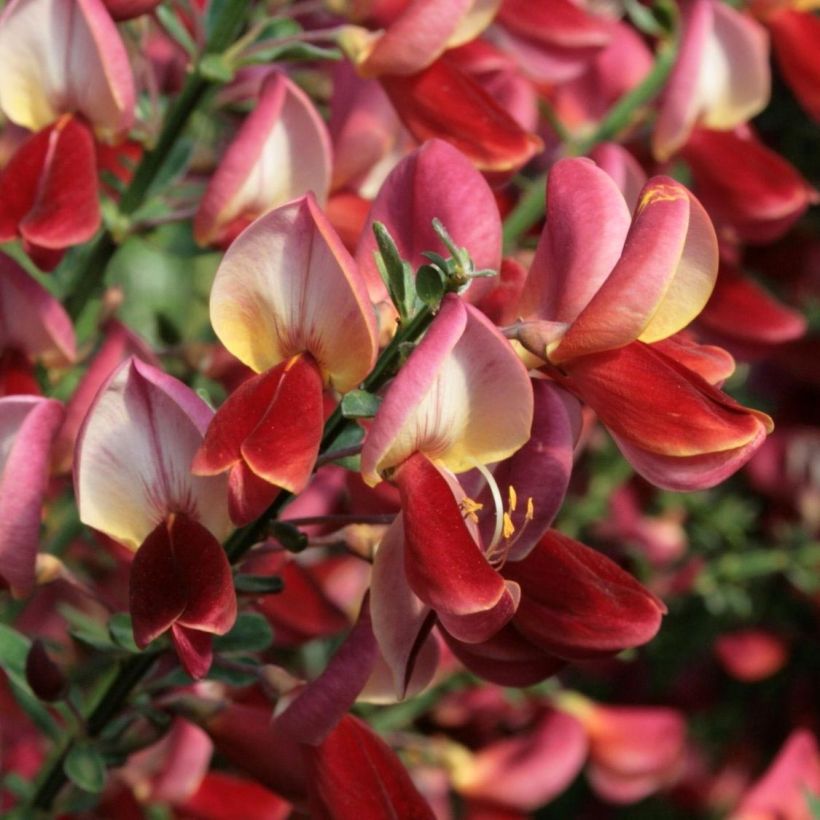

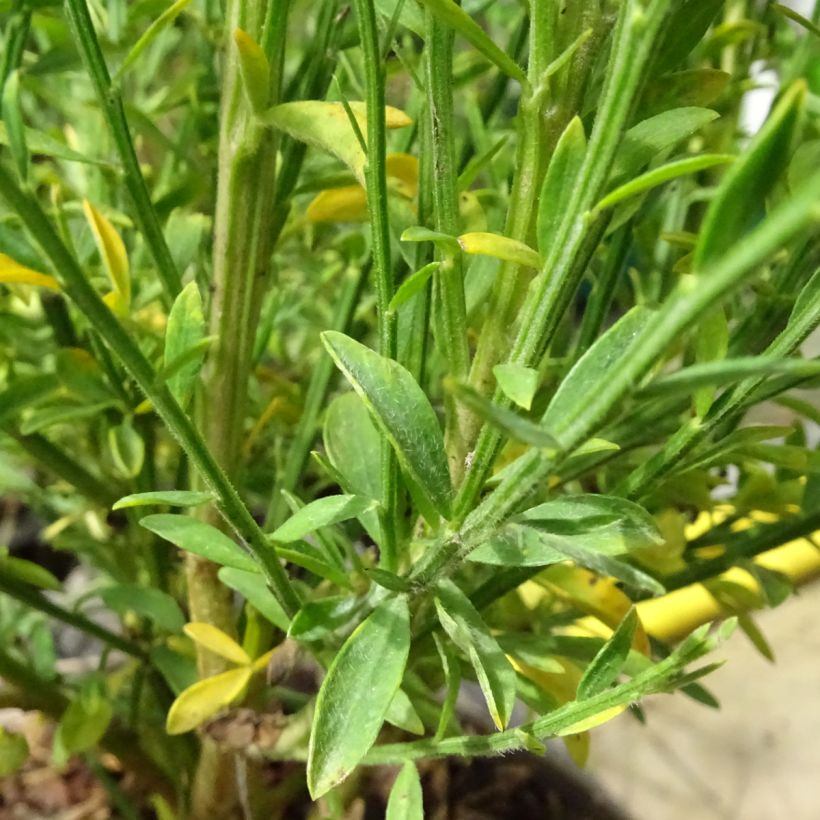



Plant habit
Flowering
Foliage
Botanical data
Cytisus
scoparius
Roter Favorit
Fabaceae
Common Broom, Scotch Broom, European Broom
Cultivar or hybrid
Other Broom - Cytisus
Planting and care
Plant in spring or autumn in any light and well-drained soil, preferably slightly acidic or sandy, in a sunny position. It tolerates limestone in well-drained soil. Choose its location carefully as it does not like to be moved. Not demanding, it will be satisfied with severe pruning after flowering to avoid fruiting, which quickly exhausts the plant. This also helps to maintain a compact habit that does not become bare at the base. Planted in poor soil, the plant is less likely to become bare at the base. If the plant is damaged during a severe winter, cut back any blackened stems to the base. The lifespan is quite short, around 5 to 8 years.
Planting period
Intended location
Care
This item has not been reviewed yet - be the first to leave a review about it.
Haven't found what you were looking for?
Hardiness is the lowest winter temperature a plant can endure without suffering serious damage or even dying. However, hardiness is affected by location (a sheltered area, such as a patio), protection (winter cover) and soil type (hardiness is improved by well-drained soil).

Photo Sharing Terms & Conditions
In order to encourage gardeners to interact and share their experiences, Promesse de fleurs offers various media enabling content to be uploaded onto its Site - in particular via the ‘Photo sharing’ module.
The User agrees to refrain from:
- Posting any content that is illegal, prejudicial, insulting, racist, inciteful to hatred, revisionist, contrary to public decency, that infringes on privacy or on the privacy rights of third parties, in particular the publicity rights of persons and goods, intellectual property rights, or the right to privacy.
- Submitting content on behalf of a third party;
- Impersonate the identity of a third party and/or publish any personal information about a third party;
In general, the User undertakes to refrain from any unethical behaviour.
All Content (in particular text, comments, files, images, photos, videos, creative works, etc.), which may be subject to property or intellectual property rights, image or other private rights, shall remain the property of the User, subject to the limited rights granted by the terms of the licence granted by Promesse de fleurs as stated below. Users are at liberty to publish or not to publish such Content on the Site, notably via the ‘Photo Sharing’ facility, and accept that this Content shall be made public and freely accessible, notably on the Internet.
Users further acknowledge, undertake to have ,and guarantee that they hold all necessary rights and permissions to publish such material on the Site, in particular with regard to the legislation in force pertaining to any privacy, property, intellectual property, image, or contractual rights, or rights of any other nature. By publishing such Content on the Site, Users acknowledge accepting full liability as publishers of the Content within the meaning of the law, and grant Promesse de fleurs, free of charge, an inclusive, worldwide licence for the said Content for the entire duration of its publication, including all reproduction, representation, up/downloading, displaying, performing, transmission, and storage rights.
Users also grant permission for their name to be linked to the Content and accept that this link may not always be made available.
By engaging in posting material, Users consent to their Content becoming automatically accessible on the Internet, in particular on other sites and/or blogs and/or web pages of the Promesse de fleurs site, including in particular social pages and the Promesse de fleurs catalogue.
Users may secure the removal of entrusted content free of charge by issuing a simple request via our contact form.
The flowering period indicated on our website applies to countries and regions located in USDA zone 8 (France, the United Kingdom, Ireland, the Netherlands, etc.)
It will vary according to where you live:
- In zones 9 to 10 (Italy, Spain, Greece, etc.), flowering will occur about 2 to 4 weeks earlier.
- In zones 6 to 7 (Germany, Poland, Slovenia, and lower mountainous regions), flowering will be delayed by 2 to 3 weeks.
- In zone 5 (Central Europe, Scandinavia), blooming will be delayed by 3 to 5 weeks.
In temperate climates, pruning of spring-flowering shrubs (forsythia, spireas, etc.) should be done just after flowering.
Pruning of summer-flowering shrubs (Indian Lilac, Perovskia, etc.) can be done in winter or spring.
In cold regions as well as with frost-sensitive plants, avoid pruning too early when severe frosts may still occur.
The planting period indicated on our website applies to countries and regions located in USDA zone 8 (France, United Kingdom, Ireland, Netherlands).
It will vary according to where you live:
- In Mediterranean zones (Marseille, Madrid, Milan, etc.), autumn and winter are the best planting periods.
- In continental zones (Strasbourg, Munich, Vienna, etc.), delay planting by 2 to 3 weeks in spring and bring it forward by 2 to 4 weeks in autumn.
- In mountainous regions (the Alps, Pyrenees, Carpathians, etc.), it is best to plant in late spring (May-June) or late summer (August-September).
The harvesting period indicated on our website applies to countries and regions in USDA zone 8 (France, England, Ireland, the Netherlands).
In colder areas (Scandinavia, Poland, Austria...) fruit and vegetable harvests are likely to be delayed by 3-4 weeks.
In warmer areas (Italy, Spain, Greece, etc.), harvesting will probably take place earlier, depending on weather conditions.
The sowing periods indicated on our website apply to countries and regions within USDA Zone 8 (France, UK, Ireland, Netherlands).
In colder areas (Scandinavia, Poland, Austria...), delay any outdoor sowing by 3-4 weeks, or sow under glass.
In warmer climes (Italy, Spain, Greece, etc.), bring outdoor sowing forward by a few weeks.

































